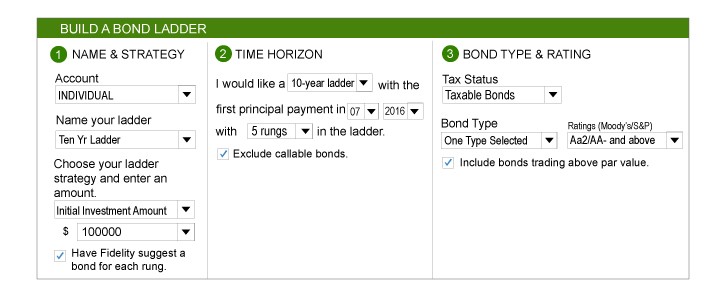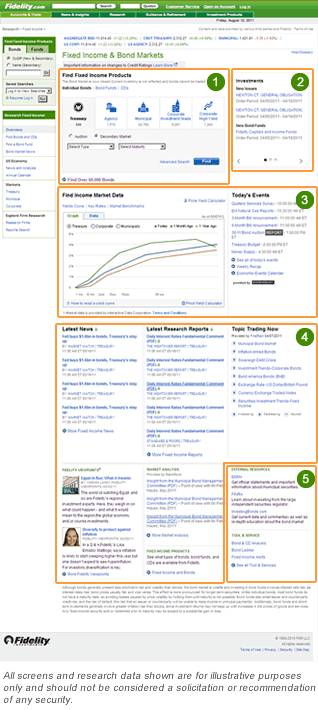Can Fidelity Build a Better Bond Ladder
Post on: 16 Март, 2015 No Comment

SarahMorgan
The fund firm that brought you the target-date fund now thinks it can reinvent the musty bond ladder – just as millions of baby boomers are starting to take seriously the question of retirement income.
The new municipal-bond portfolios from Fidelity, called Defined Maturity Funds, are structured more like bonds than like most bond funds. They each come with a maturity date ranging from 2015 to 2021, throw off income every year, and get less sensitive to changing interest rates as the maturity date gets closer. Also like a bond held to maturity, the funds are designed to liquidate at the end of their run and return cash to shareholders. And the funds can be laddered, just like bonds, so that every two years or so, a retiree would get a lump-sum payment to provide income for the next two years.
So why not just buy a bond? Fidelity says their portfolios are better, for many of the same reasons fund fans have praised mutual funds for decades. They spread risk around, managers take advantage of Fidelity’s massive buying power to get better prices, and the municipal-bond team at the fund firm has more expertise than most advisers. But these funds also aren’t subject to the same market fluctuations as a traditional bond fund, especially closer to maturity.
These features, combined with Fidelity’s clout in the fund industry, have advisers and analysts in a tizzy. This is the first new product in probably a decade that has my attention, says Mark Lamkin, the president of Lamkin Wealth Management, a Louisville-based firm with $250 million under management. And Fidelity has a track record of creating products that take the fund world by storm: its target-date portfolios, one of the first of their kind in 1996, now hold about $135 billion, or 36% of the money invested in such funds.
Fund Resources

But the new funds have their drawbacks. When investors buy a single bond, or build a ladder, they know exactly what their annual coupon payment will be. They’re also guaranteed to get their principal back at the maturity date, as long as the bonds don’t default. Fidelity’s funds will be a little trickier. The yield will fluctuate because, as money flows in and out of the funds, they’ll be buying and selling bonds with different yield profiles, says Mark Sommer, the lead portfolio manager of the 2015 and 2019 funds. Investors who hold the funds to maturity, reinvesting the income as they go along, will likely see returns close to the average yield of the underlying bonds in the fund when they purchased it, but the fund can’t guarantee that, Sommer says.
These also are not the cheapest funds of their kind on the market. Though these are the first mutual funds to adopt such a strategy, iShares introduced a series of five exchange-traded funds with a similar strategy. In the 18 months since their launch, they’ve gathered just under $170 million in assets – not bad, but far from a runaway success. And they have a price advantage: They cost 0.3% per year, compared to Fidelity’s 0.4% per year. With yields so low, that little difference matters, says Ronald Deutsch, the managing director of Sage Capital Management, a New York-based investment advisory firm with $500 million under management. There might be a time to buy this kind of product, I just don’t think the time is now, with interest rates so low, Deutsch says.
Fidelity’s Sommer responds that the fees pay for the credit screening and other research the portfolio managers will do, and for the work of liquidating the funds. They aren’t the lowest fees in the industry, but they’re quite low, he says. According to Morningstar, the average actively managed intermediate-term muni bond fund charges 0.86% in expenses, or more than twice as much as the iShares and Fidelity offerings. On the other hand, buying an individual bond is much cheaper: no ongoing expenses, and some brokerages, including Fidelity, charge a transaction fee of just $1 per bond.














